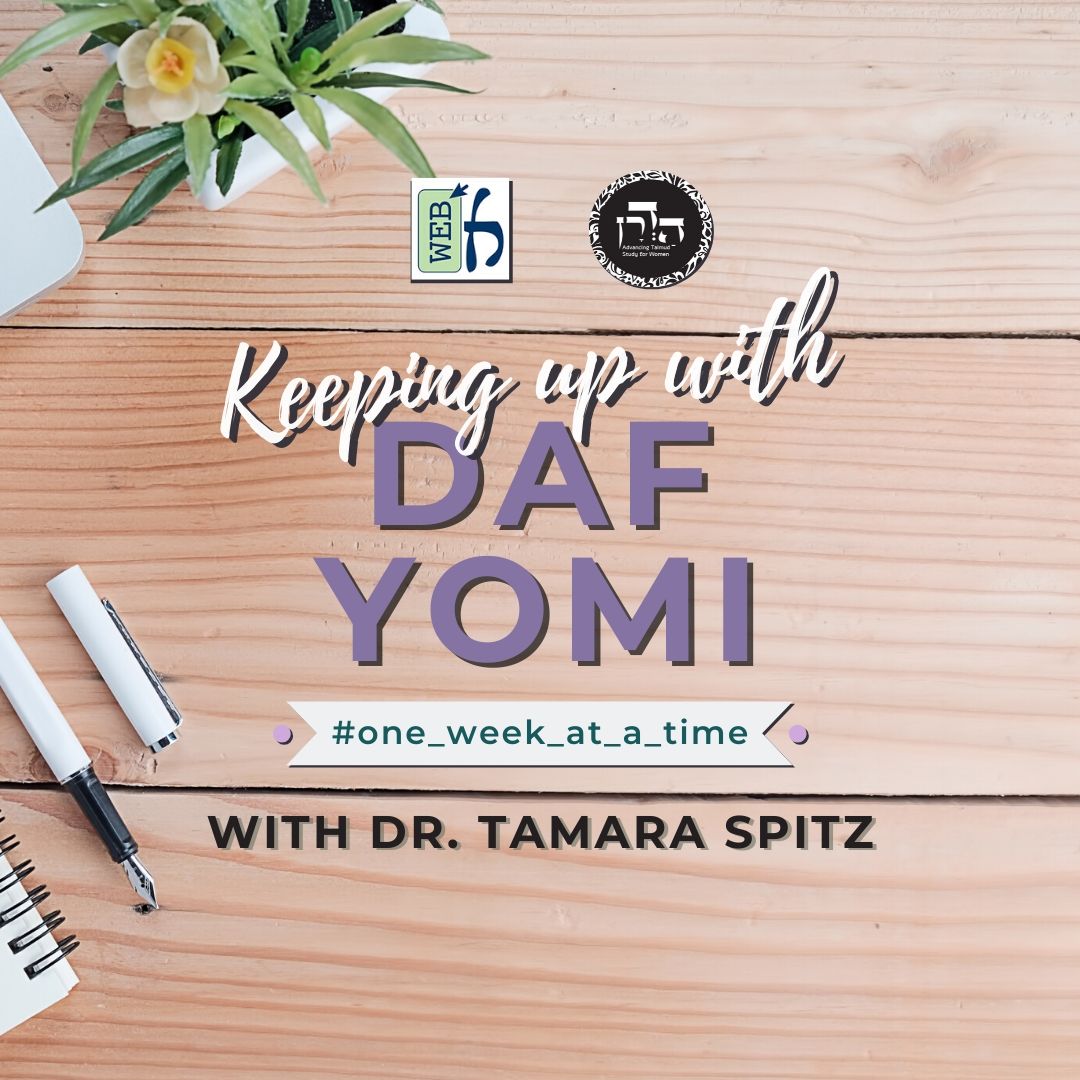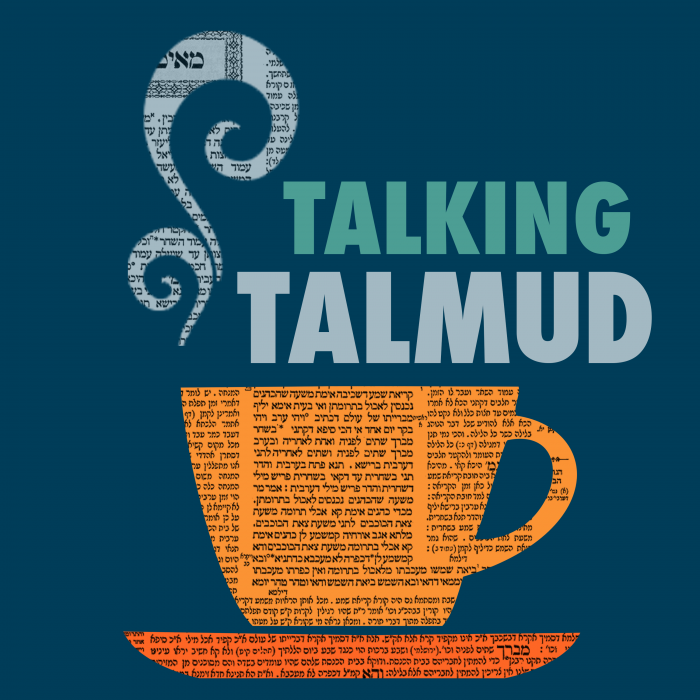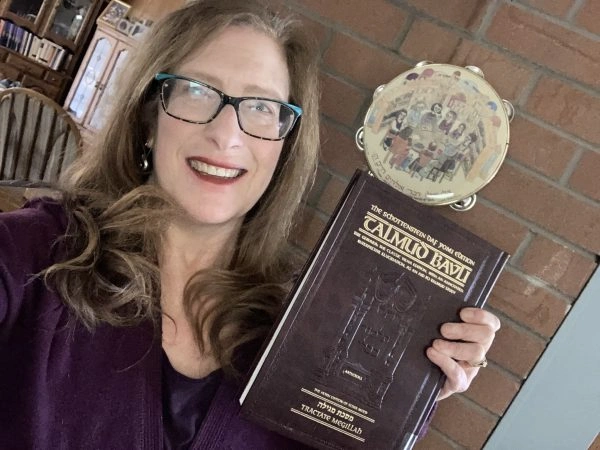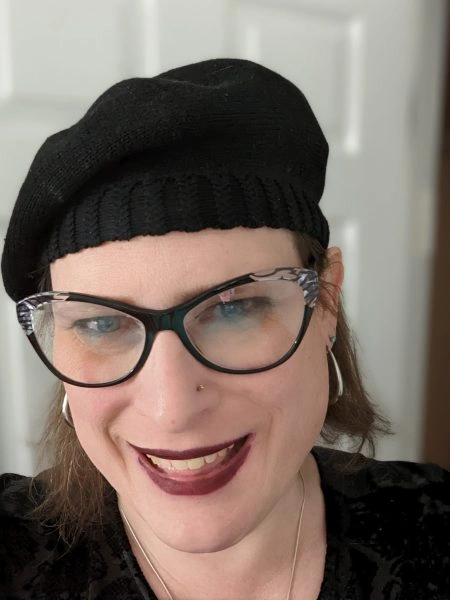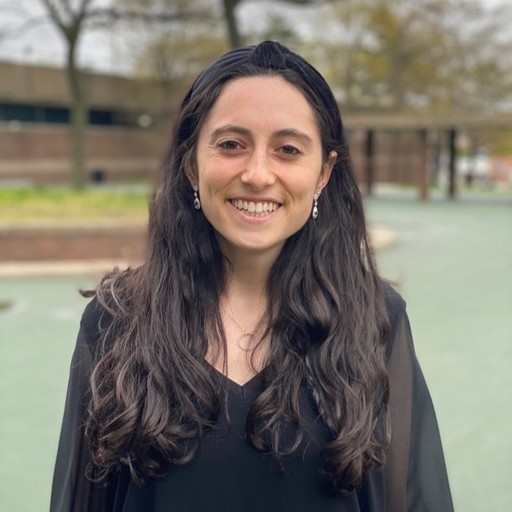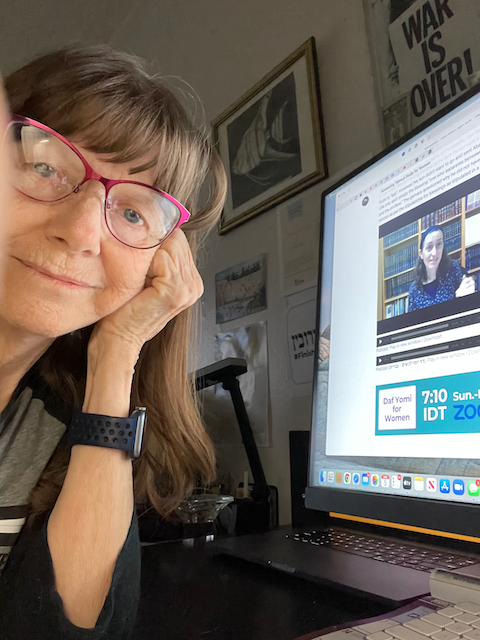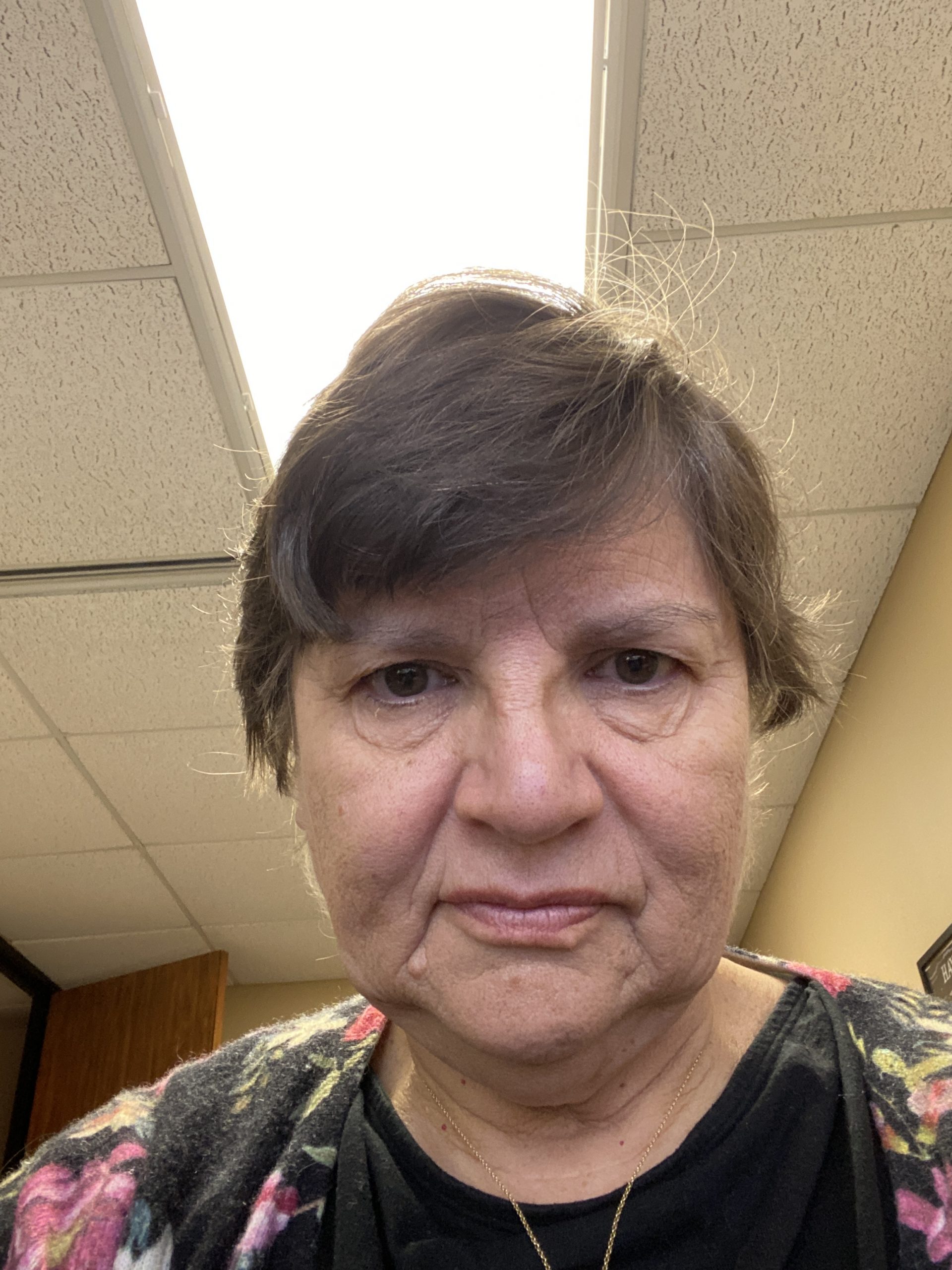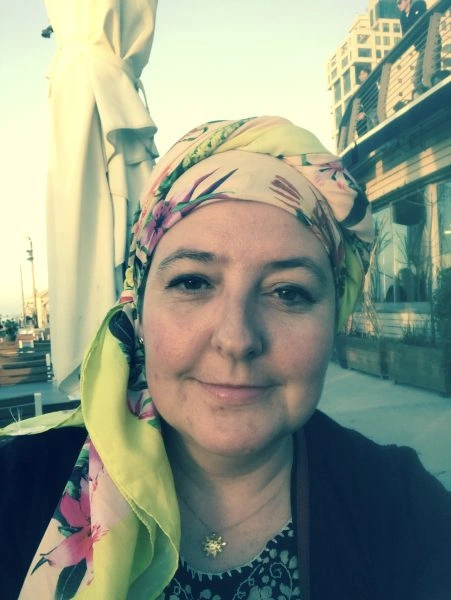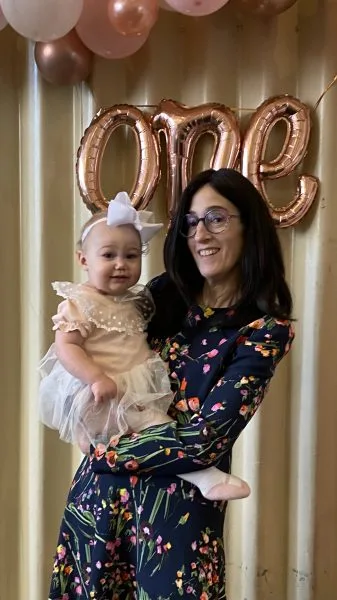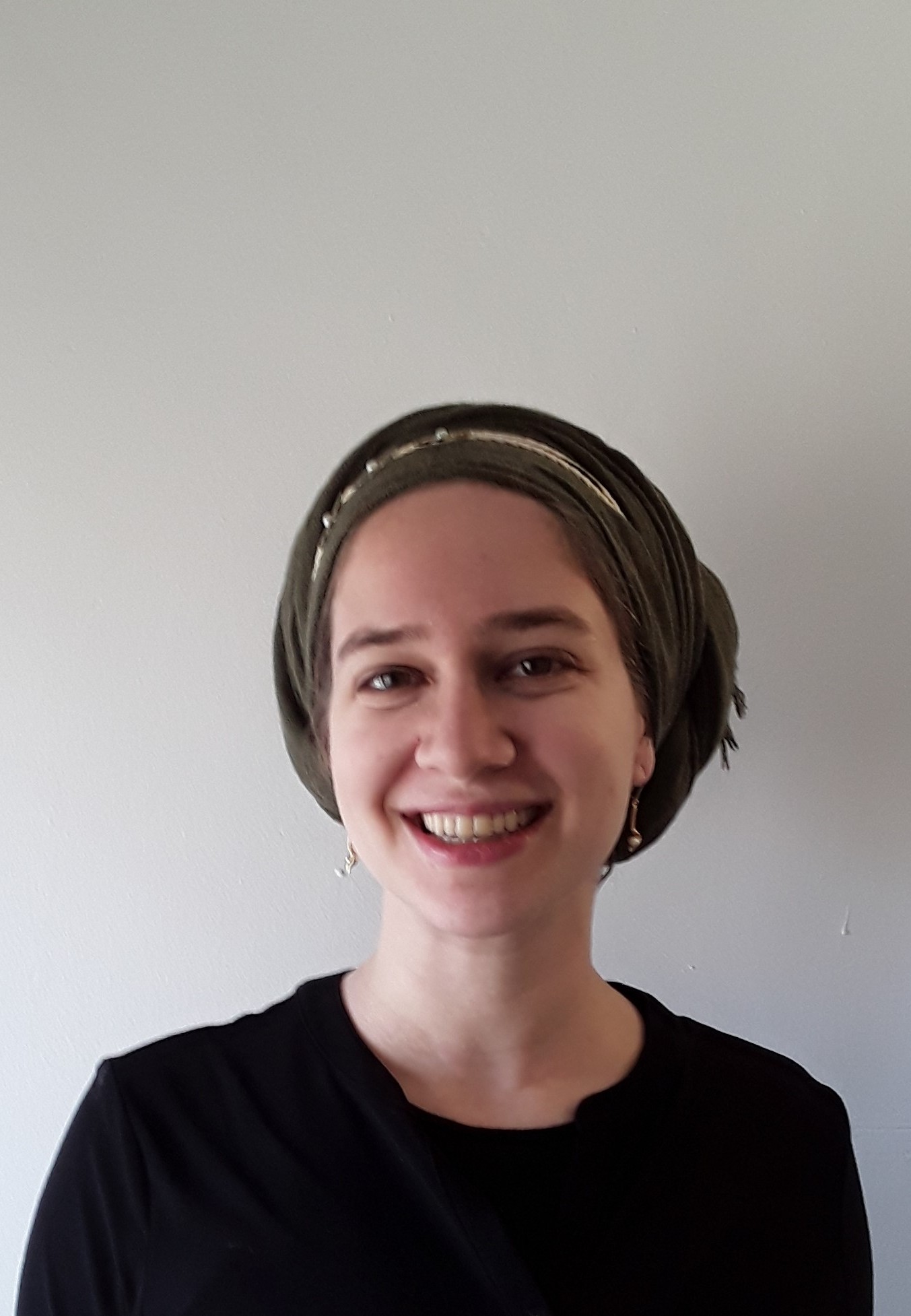Bava Batra 163
הֵן וַאֲוִירָן, אוֹ דִלְמָא הֵן וְלֹא אֲוִירָן?
does this refer to the size of lines with the space between lines added? Or is it perhaps referring to lines of writing themselves, without their spaces?
אָמַר רַב נַחְמָן בַּר יִצְחָק: מִסְתַּבְּרָא דְּהֵן וַאֲוִירָן, דְּאִי סָלְקָא דַּעְתָּךְ הֵן וְלֹא אֲוִירָן – שִׁיטָה אַחַת בְּלֹא אֲוִירָהּ, לְמַאי חַזְיָא? אֶלָּא שְׁמַע מִינַּהּ – הֵן וַאֲוִירָן! שְׁמַע מִינַּהּ.
Rav Naḥman bar Yitzḥak said: It stands to reason that it is referring to the lines with their spaces. As, if it were to enter your mind that it is referring to the lines without their spaces, for what is one line without its space fit? The baraita did not have to state that a document with a single blank line after the text, measured without counting spaces, is not forgeable; this is obvious. Rather, one may conclude from this claim that the reference is to two lines with their spaces. The Gemara affirms: Conclude from this claim that it is so.
רַבִּי שַׁבְּתַי אָמַר מִשְּׁמֵיהּ דְּחִזְקִיָּה: שְׁנֵי שִׁיטִין שֶׁאָמְרוּ – בִּכְתַב יְדֵי עֵדִים, וְלֹא כְּתַב יְדֵי סוֹפֵר. מַאי טַעְמָא? דְּכׇל הַמְזַיֵּיף, לָאו לְגַבֵּי סָפְרָא אָזֵיל וּמְזַיֵּיף.
Rabbi Shabbtai says in the name of Ḥizkiyya: With regard to the gap of two blank lines between the text and the signatures, which the Sages said invalidates the document, the lines are measured by the handwriting of witnesses, and not by the handwriting of a scribe, who is presumably skilled enough to write in a smaller script. What is the reason for this? Anyone who forges a document, adding additional lines to the document, would not go to a scribe and ask him to forge it; he would execute the forgery himself, or have another unscrupulous person who is not a professional scribe forge it. Therefore, in order to present a concern for possible forgery, a document must have two blank lines that are measured by the handwriting of an ordinary person, such as one of the witnesses.
וְכַמָּה? אָמַר רַב יִצְחָק בֶּן אֶלְעָזָר: כְּגוֹן ״לְךָ–לְךָ״ זֶה עַל גַּבֵּי זֶה. אַלְמָא קָסָבַר: שְׁנֵי שִׁיטִין, וְאַרְבָּעָה אֲוִירִין.
The Gemara has established that the width of the gap required to invalidate the document is two lines with interlinear space. The Gemara clarifies: And how much interlinear space is necessary to invalidate the document? Rav Yitzḥak ben Elazar says: For example, enough to write the Hebrew word lekha, and then the Hebrew word lekha, this word on top of that one. These two words each consist of the two letters lamed and final khaf; the former has a projection that fully occupies the interlinear space above it, and the latter has a projection that fully occupies the interlinear space below it. Writing these words one under the other, then, would require an additional interlinear space above and below both lines. The Gemara concludes: Apparently, Rav Yitzḥak ben Elazar maintains that the empty space required to invalidate the document is the width of two written lines with four interlinear spaces.
רַב חִיָּיא בַּר אַמֵּי מִשְּׁמֵיהּ דְּעוּלָּא אָמַר: כְּגוֹן לָמֶד מִלְּמַעְלָה וְכָף מִלְּמַטָּה. אַלְמָא קָסָבַר: שְׁנֵי שִׁיטִין וּשְׁלֹשָׁה אֲוִירִין.
Rav Ḥiyya bar Ami states a different opinion in the name of Ulla: For example, enough to write a lamed on the upper line and a final khaf on the lower line. The Gemara concludes: Apparently, Ulla maintains that the empty space required to invalidate the document is the width of two written lines with three interlinear spaces, one above the first line, one between the two lines, and one beneath the second line.
רַבִּי אֲבָהוּ אָמַר: כְּגוֹן: ״בָּרוּךְ בֶּן לֵוִי״ בְּשִׁיטָה אַחַת. קָא סָבַר: שִׁיטָה אַחַת וּשְׁנֵי אֲוִירִין.
Rabbi Abbahu states a different opinion: For example, enough to write the name Barukh ben Levi on one line. Barukh contains a final khaf, and Levi contains a lamed. The Gemara concludes: Apparently, Rabbi Abbahu maintains that the empty space required to invalidate the document is the width of one written line with two interlinear spaces, one above the line and one beneath the line.
אָמַר רַב: לֹא שָׁנוּ אֶלָּא בֵּין עֵדִים לַכְּתָב, אֲבָל בֵּין עֵדִים לָאַשַּׁרְתָּא – אֲפִילּוּ טוּבָא נָמֵי כָּשֵׁר.
§ Rav says: They taught in the baraita that a gap of two lines invalidates the document only if that space is between the witnesses’ signatures and the text of the document. But if there is a gap between the witnesses’ signatures and a court’s ratification of the document, which follows the witnesses’ signatures, then even if there is more space than this, the document is valid.
מַאי שְׁנָא בֵּין עֵדִים לַכְּתָב – דִּלְמָא מְזַיֵּיף וְכָתֵב מַאי דְּבָעֵי, וַחֲתִימִי סָהֲדִי; בֵּין עֵדִים לָאַשַּׁרְתָּא נָמֵי, מְזַיֵּיף וְכָתֵב מַאי דְּבָעֵי, וַחֲתִימִי סָהֲדִי!
The Gemara asks: What is different about the case where the gap is between the witnesses and the text, that it invalidates the document? There is a concern that perhaps the holder of the document may forge additional lines and write whatever he wants, and the witnesses have already signed at the bottom, giving the appearance that they attest to the added lines as well. But the same concern can be raised concerning a gap between the witnesses’ signatures and the court’s ratification as well: There, too, he can forge additional lines and write whatever he wants, and have witnesses sign it, with the court’s ratification giving the appearance that it attests to the added lines and signatures as well. Why is this document valid?
דִּמְטַיֵּיט לֵיהּ. אִי הָכִי, בֵּין עֵדִים לַשְּׁטָר נָמֵי מְטַיֵּיט לֵיהּ!
The Gemara explains: When is a gap between the witnesses’ signatures and the court’s ratification not problematic, according to Rav? Only when someone inks in the blank space with lines or dots, to prevent information from being added there. The Gemara asks: If so, the gap between the witnesses’ signatures and the text of the document should also be made irrelevant in this manner: Let the scribe ink in [metayyet] the blank space. Why, then, was it taught categorically that the witnesses must sign within two lines of the text?
אָמְרִי: סָהֲדֵי אַטְּיוּטָא הוּא דַּחֲתִימִי. בֵּין עֵדִים לָאַשַּׁרְתָּא נָמֵי, אָמְרִי: בֵּי דִינָא אַטְּיוּטָא הוּא דַּחֲתִימִי! בֵּי דִינָא אַטְּיוּטָא לָא חֲתִימִי.
The Gemara answers: Inking in the gap between the text and the signatures of the witnesses will not help, as people might say, i.e., the concern might be raised: The witnesses are signed only on the inking in. It is possible that the witnesses’ signatures were affixed only to attest that the inking was done in their presence and that the inking in is not a sign of duplicity, and their signatures do not relate to the actual text of the document. The Gemara asks: If so, raise the same concern when the gap between the witnesses’ signatures and the court’s ratification is inked in; there too, people might say: The court’s ratification is signed only for the inking in, and not for the actual text of the document. The Gemara answers: A court does not sign on mere inking in; their ratification is always in reference to the entire document.
וְלֵיחוּשׁ דִּלְמָא גָּיֵיז לֵיהּ לְעֵילָּא, וּמָחֵיק לֵיהּ לִטְיוּטָא, וְכָתֵב מַאי דְּבָעֵי, וּמַחְתִּים סָהֲדֵי; וְאָמַר רַב: שְׁטָר הַבָּא הוּא וְעֵדָיו עַל הַמְּחָק – כָּשֵׁר!
The Gemara raises another issue: And let there be a concern that perhaps the holder of the document will excise the entire text that appears above the signatures, and then erase the inked-in part and write whatever he wants in that erased area, and have unscrupulous witnesses sign it. And this would be a valid document, as Rav says: A document that comes before the court for ratification in which its content and the signatures of its witnesses are both written over an erasure is valid. The court ratification would then be assumed to be referring to this new, forged document.
הָנִיחָא לְרַב כָּהֲנָא – דְּמַתְנֵי לַהּ מִשְּׁמֵיהּ דִּשְׁמוּאֵל, שַׁפִּיר; אֶלָּא לְרַב טָבְיוֹמֵי – דְּמַתְנֵי לַהּ מִשְּׁמֵיהּ דְּרַב, מַאי אִיכָּא לְמֵימַר?
This works out well, i.e., this concern does not apply, according to Rav Kahana, who teaches in the name of Shmuel that a document in which its content and its witnesses’ signatures are both written over an erasure is valid; according to him, all is well. It is Rav who says that an inked-in gap between the witnesses’ signatures and the court’s ratification is acceptable, and it is Shmuel who says that a document that is written and signed over an erasure is acceptable. But according to Rav Tavyumei, who teaches this latter statement in the name of Rav, what can be said? According to him, Rav said both statements, and taken together they pose a difficulty: The inked-in gap between the witnesses’ signatures and the ratification can easily be erased and a new document with signatures can be written over the erasure.
קָסָבַר: כׇּל כִּי הַאי גַוְונָא, אֵין מְקַיְּימִין אוֹתוֹ מִן הָאַשַּׁרְתָּא שֶׁבּוֹ, אֶלָּא מִן הָעֵדִים שֶׁבּוֹ.
The Gemara answers: Rav maintains that in all cases like this, where a document and its witnesses’ signatures are written over an erasure and there is a court ratification on a non-erased part of the paper, the later court ratifies the document not on the basis of the previous court’s ratification that is on it, but only on the basis of the signatures of the witnesses that are on it. Therefore, the forging of a document in this manner is impossible, as the prior ratification of the court is disregarded, and the witnesses will attest to what they signed upon.
וְרַבִּי יוֹחָנָן אָמַר: לֹא שָׁנוּ אֶלָּא בֵּין הָעֵדִים לַכְּתָב, אֲבָל בֵּין עֵדִים לָאַשַּׁרְתָּא – אֲפִילּוּ שִׁיטָה אַחַת פָּסוּל.
The Gemara cites another opinion: And Rabbi Yoḥanan says: They taught in the baraita that a gap of one line does not invalidate the document only in the case where that space is between the witnesses’ signatures and the text of the document. But if the gap is between the witnesses’ signatures and a court’s ratification of the document, then a space of even one line renders the document not valid.
מַאי שְׁנָא בֵּין עֵדִים לָאַשַּׁרְתָּא – דִּלְמָא גָּיֵיז לְעִילַּאי, וְכָתֵב הוּא וְעֵדָיו בְּשִׁיטָה אַחַת, וְקָסָבַר: שְׁטָר הַבָּא הוּא וְעֵדָיו בְּשִׁיטָה אַחַת – כָּשֵׁר;
The Gemara asks: What is different about the case where there is a one-line gap between the witnesses’ signatures and the court’s ratification that you say it is not valid? The Gemara answers: There is a concern that perhaps the holder of the document will excise the entire text of the document at the top of the paper and then write a new, brief document, with its text and the signatures of its witnesses on one line. The court’s ratification will appear to verify the new, forged document. And Rabbi Yoḥanan holds that a document that comes before the court with its text and the signatures of its witnesses appearing on one line is valid.
אִי הָכִי, בֵּין עֵדִים לַכְּתָב נָמֵי – דִּלְמָא גָּיֵיז לֵיהּ לְעִילַּאי, וְכָתֵב מַאי דְּבָעֵי, וַחֲתִימִי סָהֲדֵי! קָא סָבַר: שְׁטָר הַבָּא הוּא בְּשִׁיטָה אַחַת, וְעֵדָיו בְּשִׁיטָה אַחֶרֶת – פָּסוּל.
The Gemara suggests: If so, the same problem also exists when there is a one-line gap between the witnesses’ signatures and the text: There should be a concern that perhaps he will excise the entire text of the document at the top of the paper and then write whatever he wants in a brief, one-line document. And the witnesses’ signatures on the next line, which are there from the old document, will still be signed there, appearing to attest to the veracity of the new, one-line document. The Gemara answers: Rabbi Yoḥanan holds that a document that comes before the court with its text on one line and the signatures of its witnesses appearing on another line, i.e., on the following line, is not valid.
וְלֵיחוּשׁ דִּלְמָא כָּתֵב הוּא וְעֵדָיו בְּשִׁיטָה אַחַת, וְאָמַר: אֲנָא לְרַבּוֹת בְּעֵדִים הוּא דַּעֲבַדִי!
The Gemara suggests: And let there be a concern that perhaps the holder of the document will excise the entire document, leaving only the blank line and the signatures that follow it, and he will write a brief document in which its text and the signatures of its witnesses are on one line, followed by the original signatures that remained from the original document, and he will say: I did this in order to increase the number of witnesses, the more to publicize the matter written in the document. The document is therefore still forgeable.
קָסָבַר: כֹּל כִּי הַאי גַוְונָא – אֵין מְקַיְּימִין אוֹתוֹ מִן הָעֵדִים שֶׁלְּמַטָּה, אֶלָּא מִן הָעֵדִים שֶׁלְּמַעְלָה.
The Gemara answers: Rabbi Yoḥanan maintains that in all cases like this, where a document and its witnesses’ signatures are written on one line, followed by other signatures on subsequent lines, the court ratifies the document not on the basis of the signatures of the witnesses that are on the bottom, but on the basis of the signatures of the witnesses that are on top, on the same line as the text. Therefore, the forging of a document in this manner is impossible. The false signatures of the witnesses will be discovered when those witnesses attest to what they signed upon.
גּוּפָא – אָמַר רַב: שְׁטָר הַבָּא הוּא וְעֵדָיו עַל הַמְּחָק – כָּשֵׁר.
§ Having cited Rav’s statement, the Gemara discusses the matter itself. Rav says: A document that comes before the court in which its content and the signatures of its witnesses are both written over an erasure is valid.



